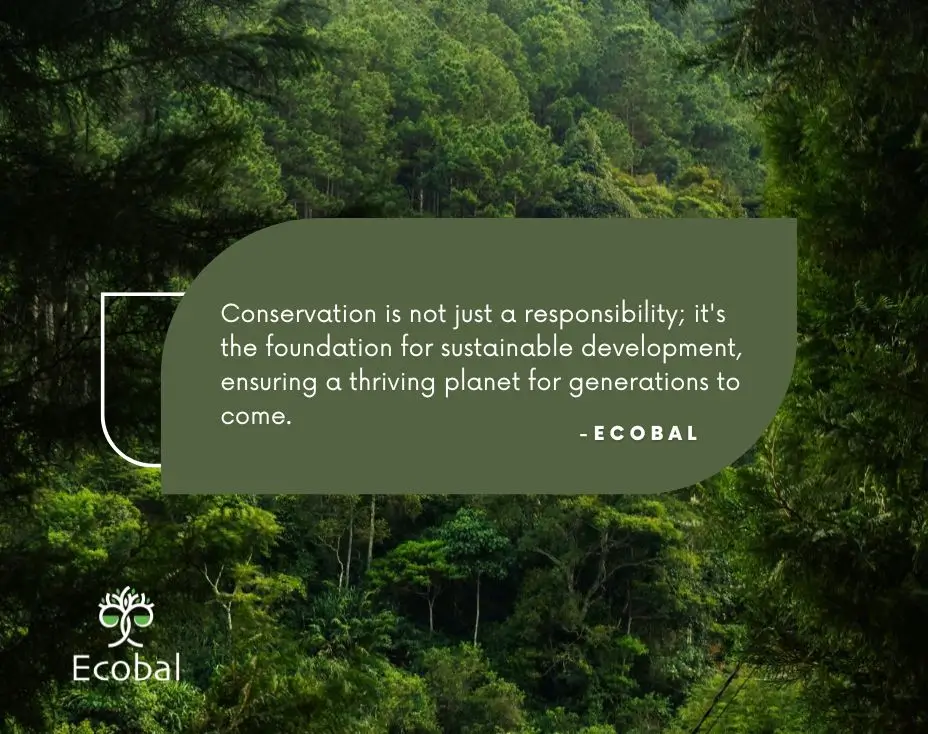How Conservation Efforts Support Sustainable Development Goals (SDGs)
The Sustainable Development Goals (SDGs) are a set of 17 global objectives established by the United Nations in 2015 as part of the 2030 Agenda for Sustainable Development. These goals aim to address a wide range of global challenges, including poverty, inequality, climate change, environmental degradation, and peace and justice. Each goal has specific targets and indicators to measure progress, with the overarching aim of ensuring that all people enjoy peace and prosperity by 2030. The success of the SDGs relies on mobilizing financial resources, sharing knowledge, fostering innovation, and encouraging partnerships at all levels.

Conservation efforts are crucial for achieving the SDGs by promoting the sustainable use and management of natural resources, essential for human well-being and environmental health. Specifically, Goal 15 emphasizes protecting, restoring, and sustainably managing terrestrial ecosystems to address challenges like deforestation and biodiversity loss. Approximately 25% of the world’s land is degraded due to unsustainable practices, but restoration initiatives can sequester up to three billion tons of CO₂ annually, significantly contributing to climate change mitigation (SDG 13) .
Healthy ecosystems enhance carbon storage and provide essential services that support food security (SDG 2), clean water access (SDG 6), and resilience against natural disasters, reinforcing the interconnected nature of the SDGs . For example, healthy soils, which store nearly 80% of terrestrial carbon, benefit from restoration practices like reforestation and agroforestry, improving soil fertility, water retention, and biodiversity. Sustainable land management can rejuvenate degraded agricultural areas, increasing crop yields vital for feeding a growing population . Additionally, restoration improves watershed health, ensuring clean water supplies through natural filtration, further contributing to water security (SDG 6) .
The Importance of Biodiversity and Natural Habitats
Biodiversity is essential for maintaining ecosystem resilience and supporting livelihoods, as diverse plant and animal species can better withstand pests, diseases, and climate variability . The intrinsic value of biodiversity is recognized in international agreements like the Convention on Biological Diversity (CBD), which emphasizes halting biodiversity loss to ensure sustainable livelihoods . Approximately 50% to 90% of rural households depend on ecosystem services for their livelihoods, highlighting the direct link between conservation and poverty alleviation (SDG 1).
Conservation strategies such as establishing protected areas safeguard species and enhance ecosystem functions that regulate water flow and soil quality. By integrating restoration and conservation into development strategies, we can foster sustainable economic growth while ensuring environmental sustainability for future generations .
Economic Growth and Conservation
Conservation efforts also contribute to economic growth by promoting sustainable practices in sectors such as agriculture, forestry, and fisheries (SDG 8). By implementing nature-based solutions such as restoring wetlands for flood control or reforesting degraded lands, communities can improve their resilience to climate change while fostering economic opportunities . For example, mangrove restoration has been shown to reduce coastal erosion and protect fisheries, thus supporting local economies.
In addition to these benefits, conservation initiatives are essential for achieving SDG 14, which focuses on conserving marine resources. Healthy marine ecosystems provide food security and livelihoods for millions globally; therefore, their protection is crucial for sustainable development. The interconnectedness of these goals underscores the necessity of integrated approaches that consider ecological health as a foundation for social and economic stability.
Why It Matters for Ecobal
At Ecobal, we are committed to staying at the forefront of technological advancements in CO₂ sequestration. By integrating cutting-edge technologies such as ultra-fast CO₂ hydrate formation, we enhance our efforts to transform former agricultural or barren lands into thriving ecosystems.
Ecobal has achieved significant milestones, including:
- Establishing Nature Spots in five different EU countries: France, Italy, Poland, Spain, and Romania.
- Managing 155 hectares of Nature Spots across the EU, storing 1,581 tons of CO₂, releasing approximately 1,150 tons of oxygen annually, and conserving nature.
This ensures that our projects not only effectively sequester CO₂ but also contribute to sustainable biodiversity conservation.
Ecobal’s Mission
- Raise awareness and establish authority to certify the ecological health and capacity of rural and natural landscapes.
- Monetize ecosystem services to demonstrate the economic value of nature.
- Use natural ecosystems as efficient carbon sinks for CH₄ and CO₂ sequestration and biodiversity conservation.
- Turn CO₂ and CH₄ from a challenge into valuable and tradable commodities.
- Manage soil microbiota and fauna to improve soil health and ecosystem functionality.
- Restore biodiversity through the reintroduction and conservation of native species.
Conclusion
Conservation efforts are fundamental to realizing the SDGs. They not only protect biodiversity and enhance ecosystem services but also foster sustainable economic growth and social equity. As global challenges such as climate change and resource depletion intensify, prioritizing conservation will be essential for achieving a sustainable future that benefits both people and the planet.
About the Author
This article is written by Dr. Amisalu Milkias, Ecobal’s CO₂ Project Specialist. Dr. Milkias is an expert in carbon sequestration and sustainable development, with extensive experience in integrating conservation strategies with global environmental goals, ensuring a balance between ecological restoration and socio-economic benefits.


